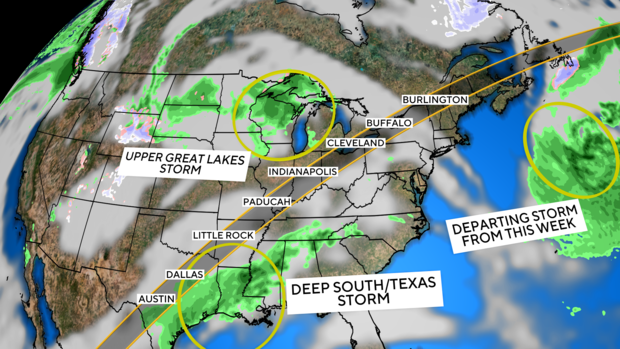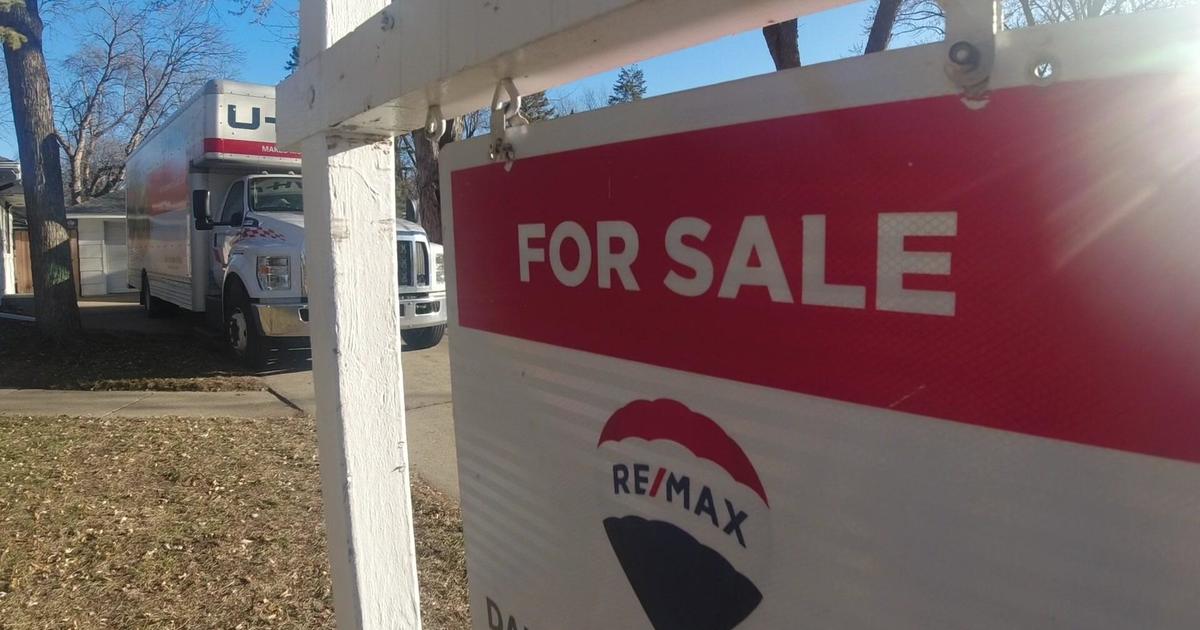Eclipse cloud cover forecasts and maps show where skies will clear up for April 8's celestial show
The April 8 total solar eclipse is now mere days away, and many Americans are packing their bags and setting out for the path of totality. While historical data suggests daunting odds of experiencing the eclipse under totally clear skies at this time of year, meteorologists now feel increasingly confident in models that show some parts of the country looking golden. Other parts of the country, though, may end up in a cloudy bust.
General cloud cover outlook for the U.S.
North America is not just in the middle of the volatility of changing seasons at this time of year, we're also currently in an El Niño pattern. That typically causes an increase in clouds and rain, but, for some reason, hasn't actually done that as much this time around, meteorologists say.
One major difference from the 2017 eclipse that cut across the continent is that the 2024 eclipse's path width will be notably wider, according to NASA. That's because the moon will technically be closer to Earth than it was last time.
The path of totality — where the moon will completely block out the sun — is roughly 150 miles wide, stretching about 2,500 miles from Texas to northeastern Maine.
Historical data indicates that the further south you are along the path of totality, the better chance you would normally have to not experience clouds. Unfortunately, the patterns that are setting up now don't necessarily match that expectation, which may leave those who put in the research to scope out the best locations suddenly in the lurch.
Cloud cover forecast for Texas, Oklahoma and Arkansas
Historically, data suggests the best odds for not seeing clouds, from a climate perspective, can be found in areas to the south, which are already experiencing the changes of spring. But volatility is the keynote.
Jeff Ray, chief meteorologist for CBS Texas, said that Texas sees a sunny or mostly sunny April day only about one-quarter of the time, on average. In fact, April is traditionally the third-stormiest month of the year in Texas.
Though the historical odds would still indicate that the area would normally be considered the best destination, Ray says there's a significant possibility that throngs will find themselves disappointed.
Jeff Ray's current forecast:
"The DFW area is the largest city in the path of totality, receiving the lion's share of out-of-town visitors and family to observe this once-in-a-lifetime event. The weather is shaping up to possibly disappoint the millions of potential viewers. We have suspected over the last week that at the very minimum, there would be in place a thin veil of high clouds overhead during most of the day on Monday. We are hoping the rain and strong storms forecasted for the day will hold off to later in the afternoon. We still believe that is the case. However, this rain event is approaching from the south. It rides in on moisture-laden air from a Gulf of Mexico that is at record warm temperatures (climate change to thank), this should bring in a rather thick deck of mid-to-low clouds. When those clouds get into the path zone is the question. Right now it's not looking good. Timing is everything, even down to a few hours."
Cloud cover forecast for Missouri, southern Illinois and Indiana
So if Texas, Oklahoma and Arkansas end up being among the less desirable places to go, what about just a little bit further north?
It's an area that will likely be familiar for some hardcore eclipse chasers. A diamond-shaped section of land centered around Carbondale, Illinois was along the path of totality in 2017, and will be again on April 8.
Those in southeastern Missouri will find historical odds for cloud-free viewing more or less matching the odds in Arkansas, and those in the Chicago metro area should find their best bet is to head toward the southern part of Illinois, according to Albert Ramon, chief meteorologist for CBS Chicago.
Ramon says April 8 typically brings cloud cover chances ranging from 60% to 80% across Chicago and its surrounding suburbs, and similar chances in Indianapolis. But Ramon says this Monday could be different.
Albert Ramon's current forecast:
"One of the best spots in the country to view the eclipse will be in Carbondale! Not only because of totality, but because of the weather. We're now looking for a good chance of a mostly sunny sky on Monday afternoon with temps in the low to mid 70s. Chicago is looking better, too, for Monday, mainly dry and more of a partly cloudy sky, and highs warmer in the mid 60s. For Indianapolis, expect partly to mostly sunny sky and highs in the low 70s."
Cloud cover forecast for the Great Lakes and Pennsylvania
The Great Lakes portion of totality's path includes large sections of Ohio, parts of Ontario south of Toronto, the Niagara Falls area, and the northwestern corner of Pennsylvania. CBS Pittsburgh meteorologist Ray Petelin said he's keeping an eye on the Great Lakes when making his final call for that part of the country.
Petelin said lake-effect clouds are his chief concern. Erie, Pennsylvania, usually only gets about six clear days during the entire month of April, for example.
Petelin says the best hopes would be pinned on the possibility of southerly breezes or warmer-than-average temperatures. And his latest models have him cautiously optimistic.
Ray Petelin's current forecast:
"A few showers look to be around the region, with the slightly better shot to see some hit or miss rain near Lake Erie. That said, in Erie the rain looks to be spotty with breaks in the clouds to pull off some views of the total eclipse. There looks to be a bit more cloud cover as you head westward toward Cleveland with passing rain showers. I am being hopeful that you will get some glimpses there as well. Down in Pittsburgh, were there is the potential for the partial eclipse of 97% , the skies are trending to be a bit brighter with an isolated rain chance."
Cloud cover forecast for New England
The last stop for totality in the U.S. will be when the path moves from New York to New England. Traditionally, the New England area would face possibly the stiffest odds in the country for catching clear skies on April 8, based on historical patterns. The data says you'd be more likely to see clouds almost anywhere in these states than not.
"If you have been following along over the last few weeks, you likely heard that, climatologically speaking, New England had the lowest odds of having clear skies on the big day. This should come as no surprise to anyone native New Englander. April can be, well, rough in these parts," said Terry Eliasen, executive weather producer for CBS Boston.
However, there is a silver lining, both metaphorically and quite visually: Eliasen says the current forecast for the area looks to buck the odds and offer possibly the country's clearest view of the solar display.
Terry Eliasen's current forecast:
"Monday may just be the nicest day in the entire first two weeks of April! It looks like luck will be on our side. Most of the region should be almost completely clear. Some high clouds may blur the show a bit in western-most New England (the Berkshires up through Vermont). Therefore, as of right now, if you have the ability to go anywhere in New England, the safest bet would be northern Maine (farthest away from any potential cloud cover). While the whole eclipse (partial to full to end) lasts a few hours, totality (the moment on truth) only lasts between 3-4 minutes. And, it is nearly happening at the same time across our entire area. So, make sure to plan your day around those few minutes, especially if you are in the path of totality."
Looking ahead to 2045
Sometimes the best-laid plans fall by the wayside, and if you're in an area where clouds end up ruining your view of the total solar eclipse, you'll have to wait quite a while for the next U.S. viewing opportunity.
The next chance for a cross-national eclipse will arrive in August 2045, when a line of totality will march from northern California to Miami Beach.
One more reminder, whether you're in the path of totality or taking in the partial eclipse from somewhere else in America: Be sure to wear special eclipse glasses to protect your eyes.




